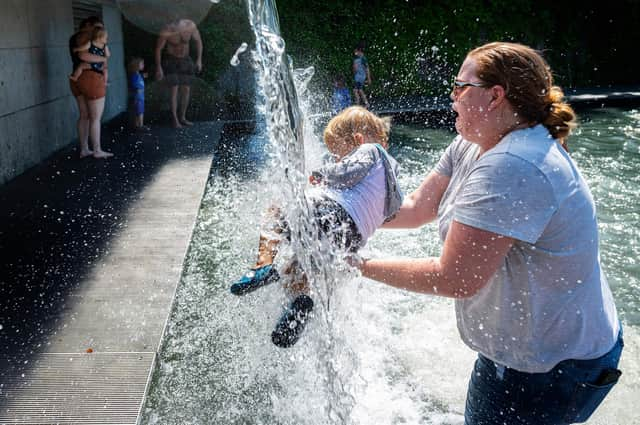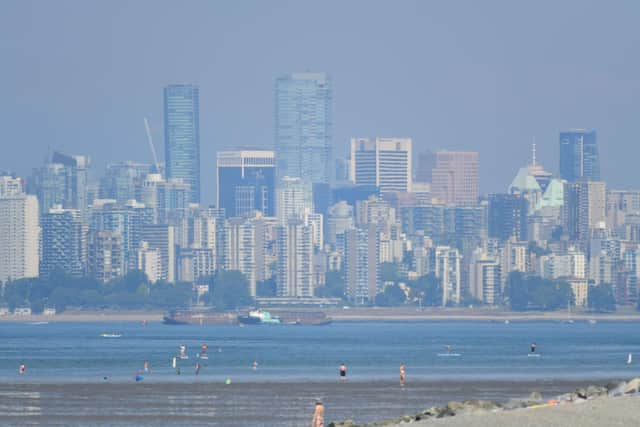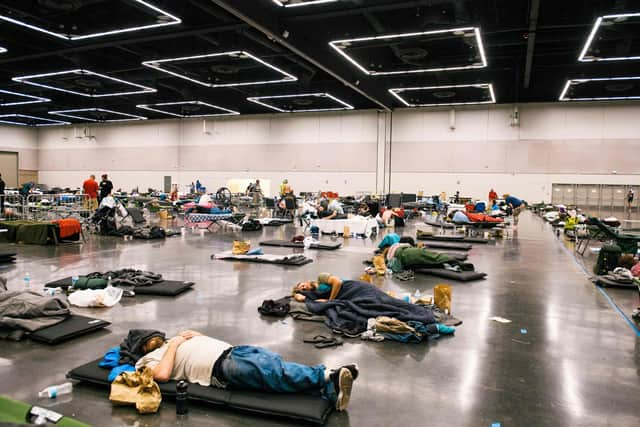Climate change: Canadian village devastated by wildfire is a warning that we must prepare for global warming's ground zero – Bob Ward


Its 250 inhabitants experienced a shattering new record temperature of 46.6 degrees Celsius on 27 June, far above the previous high mark for Canada of 45 degrees set in 1937. On the following two days, the mercury climbed even higher, reaching a scorching 49.6 degrees on 29 June.
One day later, most of the village was razed to the ground by a devastating wildfire that left at least two people dead.
Advertisement
Hide AdAdvertisement
Hide AdThe heat dome that baked Lytton and much of western United States and Canada was an unusual weather phenomenon, but scientists have little doubt that climate change contributed to the extreme temperatures.
Hundreds of people were killed by the hot weather in a part of the world where few homes have air conditioning, and the population is not used to coping with deadly heatwaves.
But North America is not alone in facing rising risks from heat due to climate change. The UK, like the rest of the world, is also warming and thousands of people have died from periods of high temperature over the past few summers.
Last summer, more than 2,500 people in England were killed by hot weather, a natural disaster that few people noticed.


But heatwaves are not the only weather extreme that climate change is making worse. Many parts of the world are experiencing greater risks of flooding because a warmer atmosphere holds more water, leading to heavier rainfall.
Climbing sea surface temperatures are helping to drive more powerful hurricanes and tropical cyclones, and the damage caused by storm surges is increasing due to sea level rise as glaciers and ice sheets melt.
This is all happening because the global average temperature has increased by just over one Celsius degree since industrialisation.
The warming is being driven by the accumulation of carbon dioxide and other greenhouse gases in the atmosphere, primarily due to the burning of fossil fuels.


Advertisement
Hide AdAdvertisement
Hide AdAnd the climate crisis could become much worse as global temperature increases.
Scientists have identified thresholds in the global and regional climates beyond which the impacts become unstoppable or irreversible, or accelerate.
These include the destabilisation of the land-based ice sheets in Greenland and West Antarctica, which together contain enough water to add 13 metres to global sea level. We could also see disruption of the monsoons in south-east Asia, potentially affecting more than a billion people. And we could even witness the shutdown of the Gulf stream that keeps the UK warmer than it otherwise would be.
Scientists have warned that these thresholds may be breached as global temperature climbs, potentially affecting hundreds of millions of people, leading to population displacement and conflict.
These are some of the consequences that countries are trying to avoid through implementation of the 2015 Paris Agreement, which commits the world to emissions cuts that would limit warming to well below 2 degrees Celsius above pre-industrial temperature, and 1.5 Celsius degrees if possible.
But we are not yet acting strongly enough to meet these targets. Annual global emissions were still on the rise before the pandemic, exceeding 59 billion tonnes in 2019, according to the United Nations Environment Programme.
If countries continue to rely as heavily on fossil fuels after the pandemic, we could soon pass the point of no return.
That is why the UK, which is due to host the vital United Nations climate change summit, Cop26, in Glasgow in November, has been leading efforts to persuade countries to set a target of cutting their annual emissions effectively to zero by the middle of this century.
Advertisement
Hide AdAdvertisement
Hide AdHowever, global warming will only stop when we reach ‘net-zero’ emissions of greenhouse gases for the world as a whole.
Many countries have made net-zero pledges ahead of the summit, but few have laid out detailed plans for how to eliminate their emissions. Some scientists estimate that our current pathway for emissions will mean that global temperature exceeds 2 Celsius degrees during this century.
So we need to accelerate the decarbonisation of our economy, by more quickly phasing out fossil fuels as a source of energy. We know we can do this in the power sector by using clean sources, such as wind, solar and nuclear, and in the transport sector by moving to electric vehicles.
But other sectors, such as aviation, steel-making and agriculture, will be more challenging to decarbonise. If we cannot find cleaner alternatives, we will need to make up for the remaining emissions by removing carbon dioxide from the atmosphere.
We can do this naturally by planting more trees and vegetation, but we may also have to use artificial methods to suck out the carbon dioxide and store it in old oil and gas fields in, for instance, the North Sea.
And if we find that we cannot get to net-zero emissions fast enough and atmospheric concentrations rise too much, we will have to not only compensate for remaining future emissions but also make up for past emissions as well until carbon dioxide levels drop to a less dangerous level.
Atmospheric carbon dioxide is already almost 50 per cent above its pre-industrial baseline, and at its strongest concentration since the Pliocene Epoch three million years ago, when the polar ice caps were much smaller and global sea level was 10 to 20 metres higher than today.
One thing is certain. The impacts of climate change will continue to grow until we reach net-zero emissions. That means that we should all prepare for the moment when we find ourselves at ground zero for the climate crisis.
Advertisement
Hide AdAdvertisement
Hide AdBob Ward is policy and communications director at the Grantham Research Institute on Climate Change and the Environment at the London School of Economics and Political Science
A message from the Editor:
Thank you for reading this article. We're more reliant on your support than ever as the shift in consumer habits brought about by coronavirus impacts our advertisers.
If you haven't already, please consider supporting our trusted, fact-checked journalism by taking out a digital subscription.
Comments
Want to join the conversation? Please or to comment on this article.
